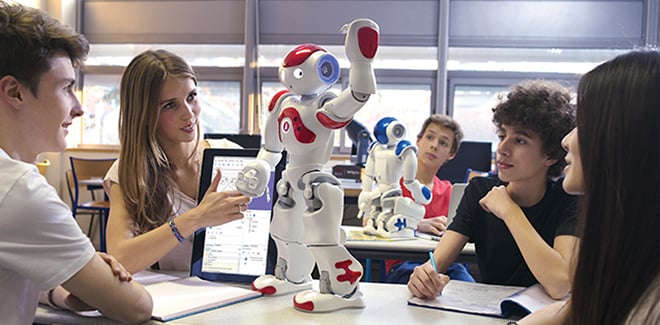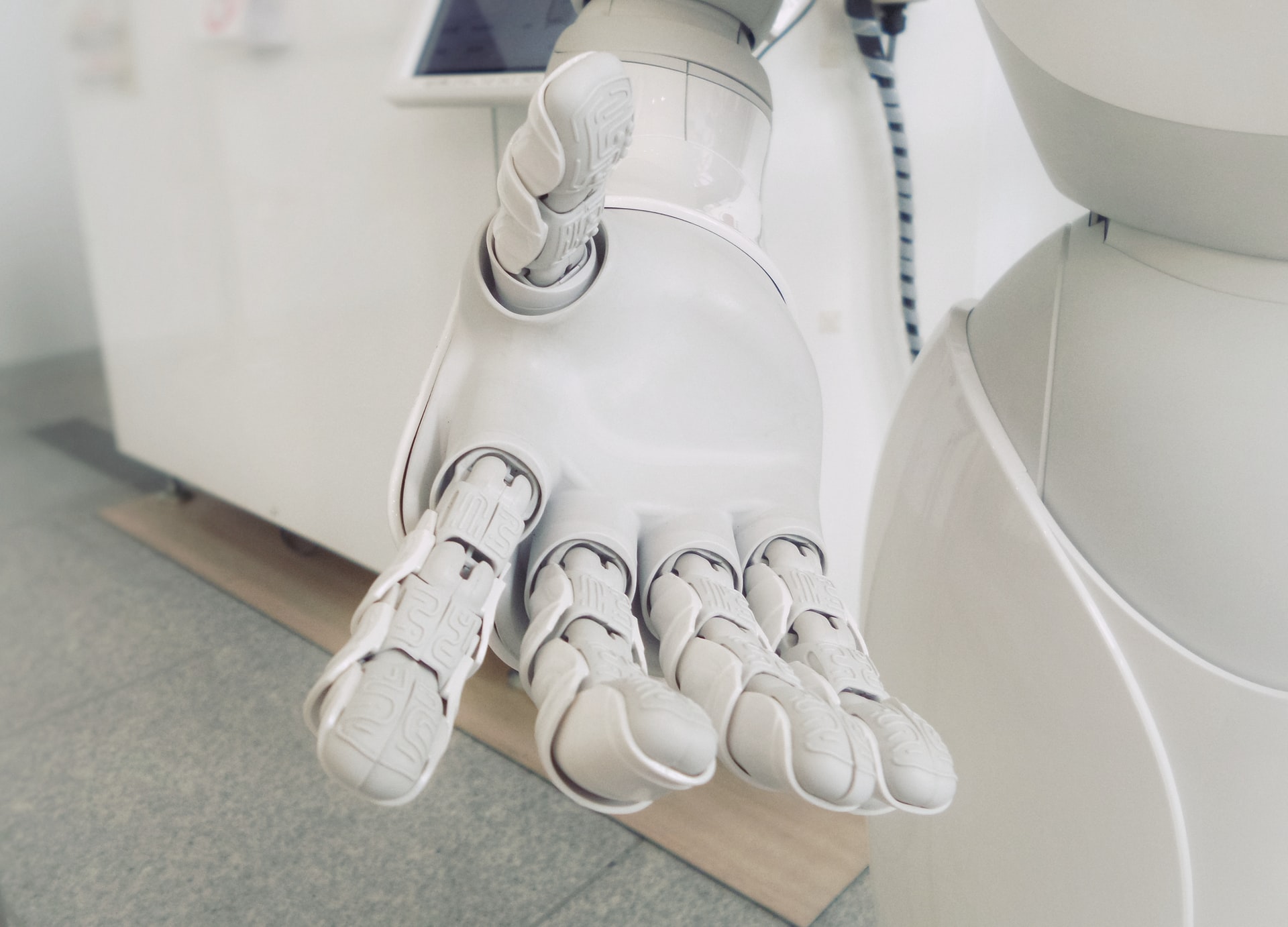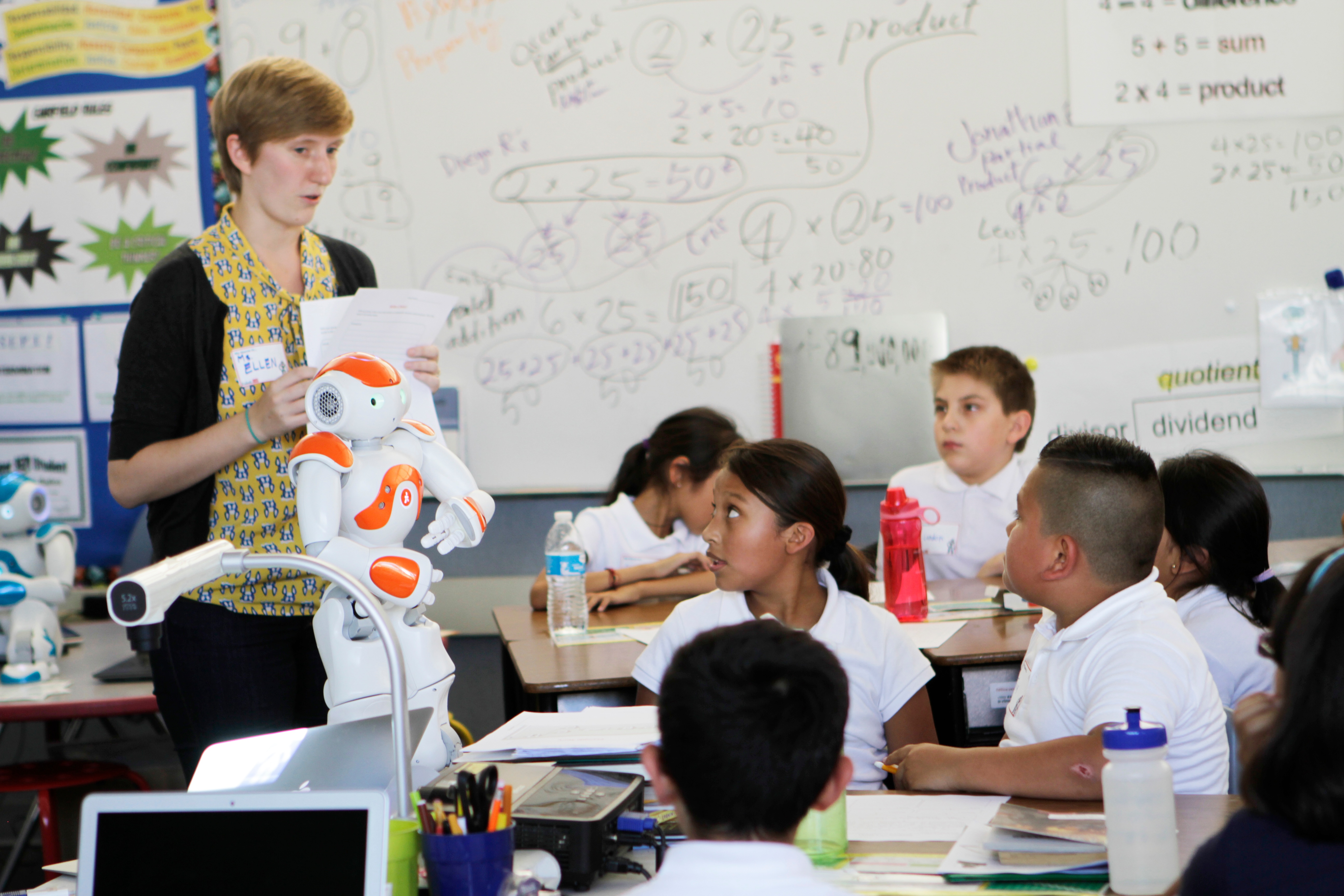4 Steps to Maximize Summer Learning
 Photo by Start Digital on Unsplash
Photo by Start Digital on Unsplash
Summer learning will play a critical role in students' return to full-time in-person learning this fall.
- 0 Comments
- Jun 25, 2021 10:00:00 AM
- Posted by Natalia Galvis
- Topics: Robotics, EdTech, STEM, Computer Science, Problem Based Learning (PBL), teachers, Coding, Robots,, students, STEMchat, Edchat, Digital Technology, teaching, online
Turn To Coding And Robotics If You Want Your Students To Posses a Growth Mindset

Diligence, a curious spirit, and perseverance are qualities we desire to see in our students. These traits are elements of the “growth mindset.” Teaching students coding presents one of the best opportunities to develop and nurture kids’ growth mindset in the school setting. This article shows five scenarios to support this position.
- 0 Comments
- Jun 24, 2021 10:00:00 AM
- Posted by Natalia Galvis
- Topics: Robotics, EdTech, STEM, Computer Science, Problem Based Learning (PBL), teachers, Coding, Robots,, students, STEMchat, Edchat, Digital Technology, teaching, online
Setting Students Up for Careers in Computer Science
By Dan Matthews
 Image Source: Pexels
Image Source: Pexels
Discussing careers with students can be challenging. After all, a lot of weight is often placed upon the subject. As a teacher, you're expected to provide insights into potential careers that empower students to thrive beyond school.
In this regard, computer science can be a great area of discussion and exploration. It has increasing relevance in the current digital landscape. There is also a growing number of professions it can be applied to. These factors, among others, can make it an important consideration. Indeed, it is part of the reason that it is imperative to teach computer science in schools. Yet, it has something of a dry reputation. Students who may not be inclined toward the science, technology, engineering, and math (STEM) subjects run the risk of missing out on careers that enrich their adult lives.
So, how can you best go about setting students up for careers in computer science? Let’s take a closer look at some areas of consideration.
- 0 Comments
- Jun 23, 2021 10:00:00 AM
- Posted by Natalia Galvis
- Topics: Robotics, EdTech, STEM, Computer Science, Problem Based Learning (PBL), teachers, Coding, Robots,, students, STEMchat, Edchat, Digital Technology, teaching, online
3 reasons virtual STEM is here to stay
By Alan Downward, Ph.D., Science Team, Flinn Scientific

Virtual STEM offers engaging learning opportunities for students—opportunities that have proved essential during COVID.
- 0 Comments
- Jun 22, 2021 10:00:00 AM
- Posted by Natalia Galvis
- Topics: Robotics, EdTech, STEM, Problem Based Learning (PBL), teachers, Robots,, students, STEMchat, Edchat, Digital Technology, teaching, online
Student Robotics and the K-12 Curriculum
By Mark Gura
Having been involved with student robotics programs for many years, I feel that robotics just may be the most perfect instructional approach currently available. It offers classroom activities that teach high-value STEM content as well as opportunities to powerfully address ELA Common Core Standards. In fact, there are connections to robotics across the full spectrum of the curriculum. Robotics is also a highly effective way to foster essential work skills like collaboration, problem-solving, and project management. It does all this while keeping kids so motivated and engaged than getting them to stop working and move on to the rest of the school day can be a challenge -- a good problem to have!
- 0 Comments
- Jun 21, 2021 10:00:00 AM
- Posted by Natalia Galvis
- Topics: Robotics, Problem Based Learning (PBL), teachers, Robots,, students, Edchat, Digital Technology, teaching, online
Building Critical Thinkers by Combining STEM With History
 Photo by Andrew Neel on Unsplash
Photo by Andrew Neel on Unsplash
By asking students to explore the history of scientific discoveries, we get them to view their world with more wonder—and more skepticism—and condition their minds to think about causes and effects.
- 0 Comments
- Apr 15, 2021 10:00:00 AM
- Posted by Natalia Galvis
- Topics: Robotics, STEM, teachers, Coding, Robots,, students, Edchat, teaching, online, distance learning, collaboration
How AI is revolutionizing education
By Hosni Zaouali, CEO & Chief Innovation Designer, Tech-AdaptiKa
 Photo by Possessed Photography on Unsplash
Photo by Possessed Photography on Unsplash
AI has incredible potential, but it will work best when the human element remains
- 0 Comments
- Apr 14, 2021 10:00:00 AM
- Posted by Natalia Galvis
- Topics: Robotics, STEM, teachers, Coding, Robots,, students, Edchat, teaching, online, distance learning, collaboration
How Robots Can Make Teachers' Job Easier
By Gregory Chapman

Finding robots in the modern workplace and around the household is common. It assists humans with different tasks. The continuous growth of robotics technology, adaptability, and adoption in the modern world, will make more jobs easier.
Artificial intelligence-powered robots are already used for manufacturing, internet search engines, military combat, and rescue missions. They are taking a lot of human jobs lost to the pandemic at an alarming rate and will take more.
One sector that has largely not felt the threat of robots replacing humans is education. But there is a growing use of robots in educating kindergarten and elementary students. The question is, "When should teachers start feeling threatened by robotics in education"?
This article will take a cursory look at the pros and cons of robotics in education. And also how robots can make teachers' jobs easier.
- 0 Comments
- Apr 12, 2021 10:00:00 AM
- Posted by Natalia Galvis
- Topics: Robotics, STEM, teachers, Coding, Robots,, students, Edchat, teaching, online, distance learning, collaboration
6 strategies for better K-12 cybersecurity
By Renee Tarun
 Photo by Dan Nelson on Unsplash
Photo by Dan Nelson on Unsplash
As COVID made remote and hybrid learning an everyday reality, it also exposed network vulnerabilities, making cybersecurity awareness more essential than ever
- 0 Comments
- Apr 9, 2021 10:00:00 AM
- Posted by Natalia Galvis
- Topics: Robotics, STEM, Coding, Robots,, students, summer, Edchat, online, distance learning
Will Online STEM Classes Continue in the Future
By Luke Smith
 Photo by Tirachard Kumtanom from Pexels
Photo by Tirachard Kumtanom from Pexels
In-person science, technology, engineering, and math (STEM) classes have been the standard approach for decades. It’s easy to understand why this is the case, as these subjects aren't just about the theoretical aspects. There are also practical elements that help to provide a rich and effective technical education. As well as reinforcing theory, these practical elements often boost students’ enthusiasm for the fields.
However, as with so many other aspects of our lives, the COVID-19 pandemic served to force schools to make changes. To maintain safe distances, educators, students, and parents have had to adapt to a new manner of learning. This found educators adopting online tools in ways they hadn’t previously considered. As a result, educators proved that STEM education can be effective to some extent in remote circumstances.
A new normal is on the horizon and remote or hybrid teaching may be features of the educational landscape for the foreseeable future. As such, it’s worth examining whether online STEM classes can be more than just an emergency measure, and be adopted as a permanent measure. How can this be made practical, what can students and teachers gain from it, and what are the challenges?
- 0 Comments
- Apr 8, 2021 10:00:00 AM
- Posted by Natalia Galvis
- Topics: Robotics, STEM, Coding, Robots,, students, summer, Edchat, online, distance learning
Relevant Posts
Popular Posts
Subscribe to Email Updates
-
I Want To Learn MoreADDITIONAL INFORMATION


